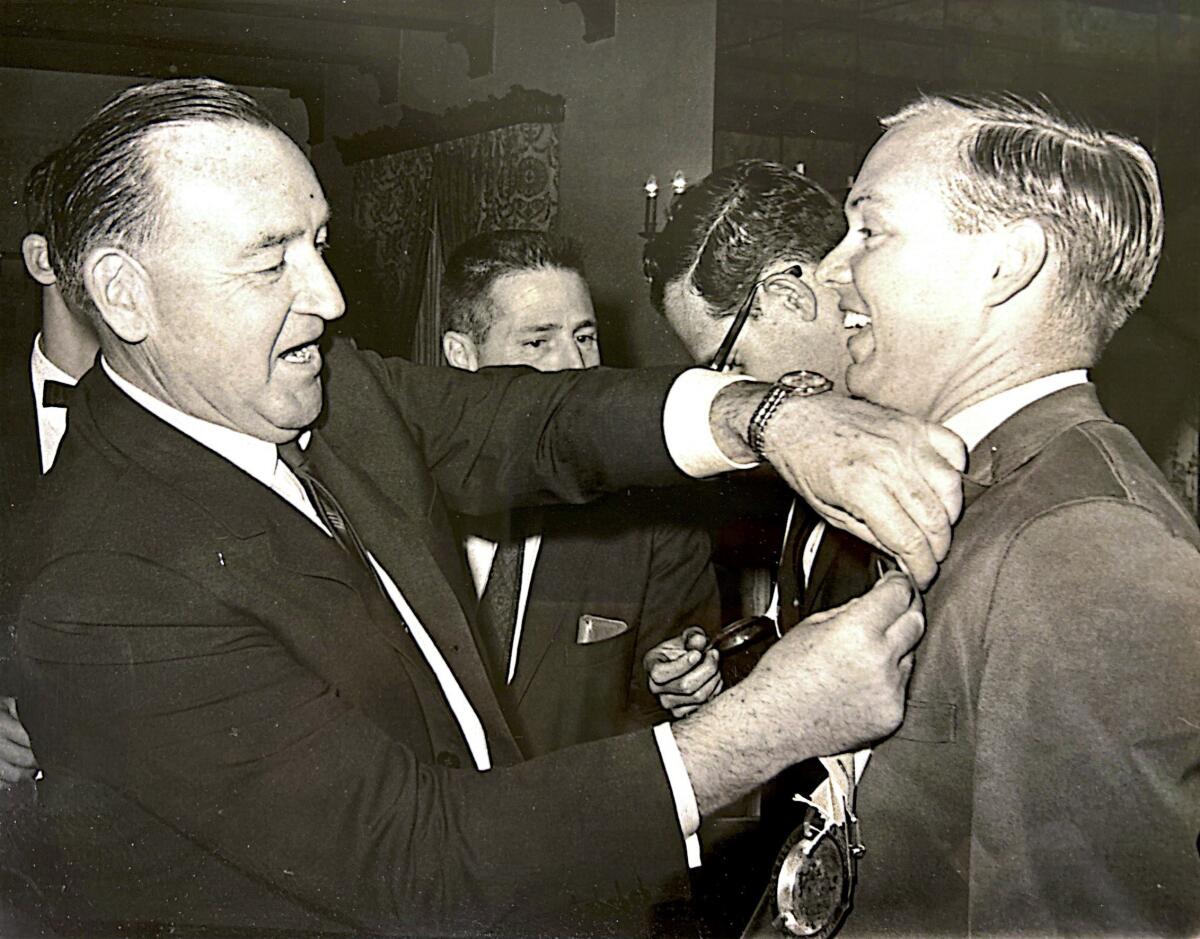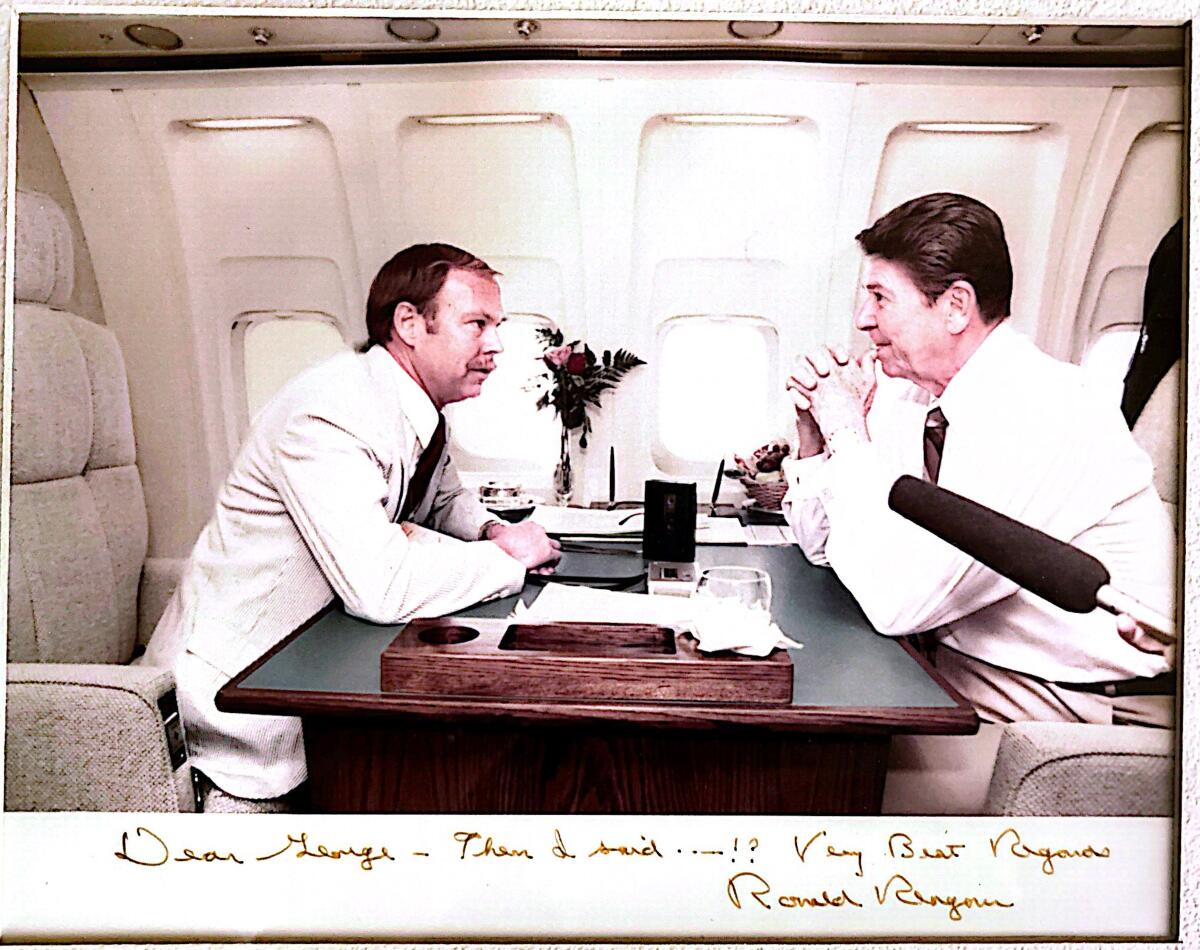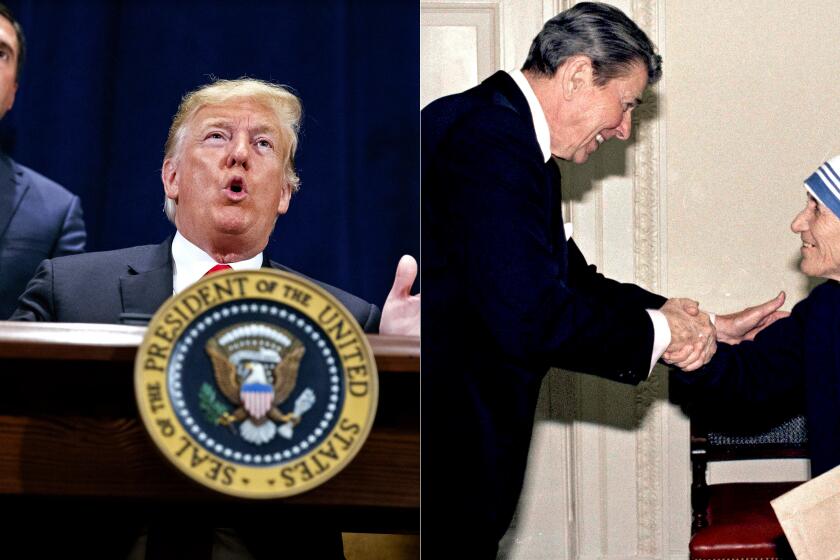For 50 years, George Skelton has had a ringside seat at the California political circus

- Share via
SACRAMENTO — Fifty years ago this month I excitedly walked into the Los Angeles Times as a newly hired state Capitol reporter.
Never would I have envisioned still being here a half-century later.
There’s a simple secret to hanging around this long: Don’t get ticked off and quit.
Another factor is luck: not being where the layoff ax falls. Many talented colleagues have been whacked.
A lot has changed since 1974 — at The Times, at the Capitol, in California politics. Some have been good, some bad.
I’ll return to that. But first, some background.
I’m a native Californian who loves the state despite all its problems that are rooted in the overpopulation of desirable places to live, most notably the southern coast.
I grew up on a small Ojai orange ranch — it cost only $9,000 in 1942 — and was raised by barely middle-class, hard-working parents who had migrated from the South searching for the proverbial California Dream.
I was the first of my father’s family to attend high school, let alone graduate from college. That was possible because California back then offered residents tuition-free higher education. It had for generations and still should. Govs. Ronald Reagan and Jerry Brown ushered in tuition in the 1970s and 1980s, a dastardly deed.
My newspaper career began at age 16 as a printer’s devil — cleaning presses, melting Linotype lead — for the weekly Ojai Valley News. I also gloried in writing high school sports stories for 10 cents an inch.
The big break was landing a job as assistant sports editor of the Ventura Star while attending community college. After graduating from San Jose State, I briefly covered local government for the then-Sunnyvale Standard, but was soon hired by United Press International in San Francisco as a cheap sportswriter.
Here’s how I got to Sacramento: I was motivated — in the wrong way — by the pitching great Warren Spahn of the then-Milwaukee Braves.
Skelton: How a racist housing policy caused the biggest, bitterest brawl in California’s Capitol
The Rumford Fair Housing Act, the 1960s legislation to end racial discrimination on housing, produced arguably the biggest, bitterest brawl ever in California’s Capitol.
While I was covering the 1961 Major League All-Star game in San Francisco, the future Hall of Famer sauntered up to me in the National League locker room, ogled my press credential and remarked: “That’s cool. I can give that to some [woman].” He used an unprintable vulgarity. Then he yanked the souvenir off my coat lapel and stuffed it in his pocket.
That turned me into a political writer. The next day I asked for a transfer to Sacramento.
There were jerks in politics, too, I figured. But at least they did things that were truly important in people’s lives beyond providing entertainment and escape.
I soon learned there are many similarities between sports and politics. Arrogance and egos afflict both, although politicians don’t tend to act like jerks. They need to win popularity contests to stay employed.
Anyway, after the 1961 baseball season I arrived at the UPI bureau in Sacramento — one week before the legendary Democrat Jesse (Big Daddy) Unruh of Inglewood was elected Assembly speaker.
Then and now are like night and day.
In 1961, all 40 Senate members were white males.
There was one female Assembly member out of 80 — Democrat Pauline Davis from Plumas County. You can thank her for highway rest stops.
There were two Black Assembly members: One was Byron Rumford (D-Berkeley), who authored legislation in 1963 that ended racial discrimination in the sale and rental of housing. It was arguably the biggest, bitterest brawl ever in California’s Capitol.
Even in 1974, there were only three female legislators. There were six Black members, including Assemblyman Willie Brown (D-San Francisco), a brilliant political tactician who later became the longest-serving speaker. There were just five Latino and three Asian American lawmakers.
Today, there’s a good mix of genders, races and ethnicities in the 120-member Legislature: 50 women, 39 Latinos, 13 Asian Americans and 12 Black legislators.
That’s because more opportunities have opened up for women and there are many more Latino and Asian American voters. California Latinos also became more politically active. And the demise of gerrymandering helped diversify the Legislature.
Term limits — enacted by voters in 1990 — forced more legislative turnover, opening slots for women and people of color. That’s the plus side of term limits. The downside is the loss of many good, experienced lawmakers with policy and legislating expertise.
There have been other dramatic changes at the Capitol.
Because of a 1960s Supreme Court ruling, the apportionment of state Senate seats is based on population, not geography. Before, it had been patterned after the U.S. Senate. L.A. County’s state Senate representation jumped from one to around 14. I don’t think this resulted in a more productive Legislature.
The Legislature went “full time” in 1966, with still questionable results.
Over Democratic objections, voters — encouraged by Republican Gov. Arnold Schwarzenegger — ended the Legislature’s sordid practice of gerrymandering legislative and congressional districts for partisan advantage. A very healthy thing.
The Republican Party will hold a presidential candidates debate at the Ronald Reagan library Wednesday. It’s a bad fit. The GOP’s modern idol is exactly the opposite of Reagan in personality and character.
A bad thing: The California Republican Party imploded, ignoring a warning from Schwarzenegger that “we are dying at the box office. We are not filling the seats.”
So, we now have one-party rule in Sacramento. There’s a loss of moderating influence and thoughtful compromise that’s needed in a republican democracy.
California morphed from a purple state to deep blue mainly because of demographic changes. Latino and Asian American voters shifted left because many saw Republicans as anti-immigrant. And the GOP trapped itself into opposing abortion rights, gun control and environmental protections favored by voters.
The best governor I ever covered? Easy. Pat Brown, the builder of university campuses, freeways and the controversial state water project that he probably couldn’t sell today because of environmental concerns.

The most exciting: Ronald Reagan, an outspoken conservative who governed as a moderate — raising taxes when needed, signing the nation’s most liberal abortion rights act and protecting the environment.
He reverted to his conservative instincts, however, when I covered him as president.
Fortunately, every news organization where I’ve worked — including the old Sacramento Union — was at their peak while I was there. They’ve since compressed or collapsed.
The demise of newspapers and staff cutbacks means fewer eyeballs on elected officials.
For me, being one of the eyeballs has been challenging, exciting and fun. I couldn’t ask for a better job than cutting through the political bull.
More to Read
Sign up for Essential California
The most important California stories and recommendations in your inbox every morning.
You may occasionally receive promotional content from the Los Angeles Times.
















